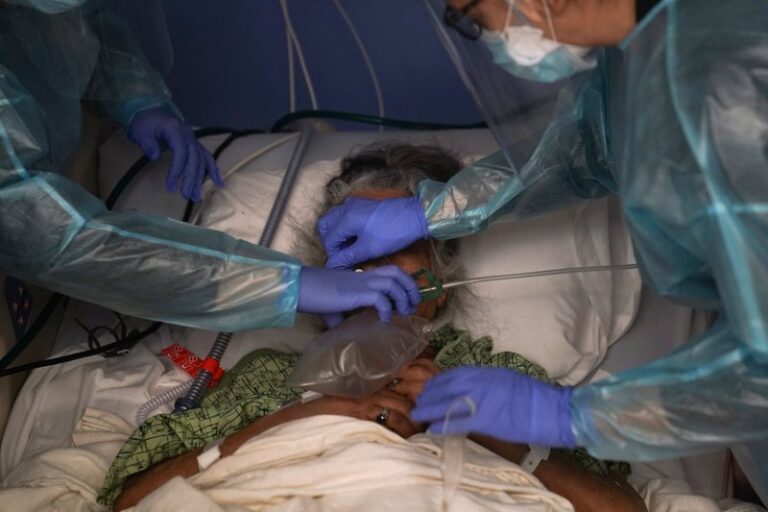
(AP)—Straining to handle record numbers of COVID-19 patients, hundreds of the nation’s intensive care units are running out of space and supplies and competing to hire temporary traveling nurses at soaring rates. Many of the facilities are clustered in the South and West.
An Associated Press analysis of federal hospital data shows that since November, the share of U.S. hospitals nearing the breaking point has doubled. More than 40% of Americans now live in areas running out of ICU space, with only 15% of beds still available.
Intensive care units are the final defense for the sickest of the sick, patients who are nearly suffocating or facing organ failure. Nurses who work in the most stressed ICUs, changing IV bags and monitoring patients on breathing machines, are exhausted.“You can’t push great people forever. Right? I mean, it just isn’t possible,” said Houston Methodist CEO Dr. Marc Boom, who is among many hospital leaders hoping that the numbers of critically ill COVID-19 patients have begun to plateau. Worryingly, there’s an average of 20,000 new cases a day in Texas, which has the third-highest death count in the country and more than 13,000 people hospitalized with COVID-19-related symptoms.
According to data through Thursday from the COVID Tracking Project, hospitalizations are still high in the West and the South, with over 80,000 current COVID-19 hospital patients in those regions. The number of cases reported in the U.S. since the pandemic’s start surpassed 25 million on Sunday, according to Johns Hopkins University.
Encouragingly, hospitalizations appear to have either plateaued or are trending downward across all regions. It’s unclear whether the easing will continue with more contagious versions of the virus arising and snags in the rollout of vaccines.
In New Mexico, one surging hospital system brought in 300 temporary nurses from outside the state, at a cost of millions of dollars, to deal with overflowing ICU patients, who were treated in converted procedure rooms and surgery suites.
“It’s been horrid,” said Dr. Jason Mitchell, chief medical officer for Presbyterian Healthcare Services in Albuquerque. He’s comforted that the hospital never activated its plan for rationing lifesaving care, which would have required a triage team to rank patients with numerical scores based on who was least likely to survive.
“It’s a relief that we never had to actually do it,” Mitchell said. “It sounds scary because it is scary.”
In Los Angeles, Cedars-Sinai Medical Center ran into shortages of take-home oxygen tanks, which meant some patients who could otherwise go home were kept longer, taking up needed beds. But the biggest problem is competing with other hospitals for traveling nurses.





